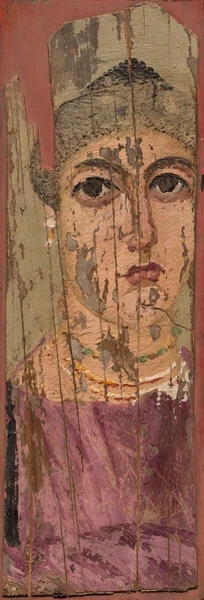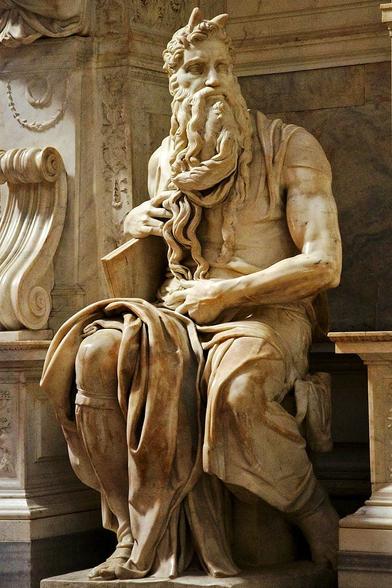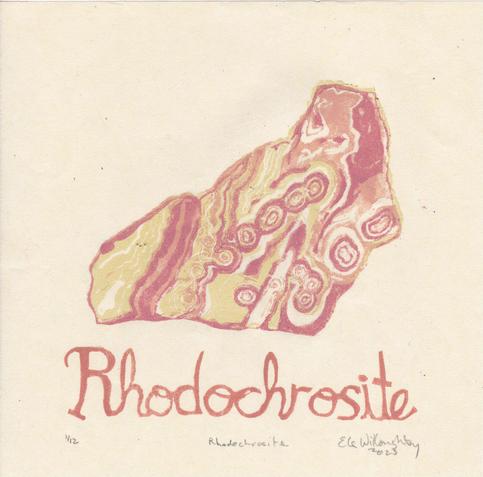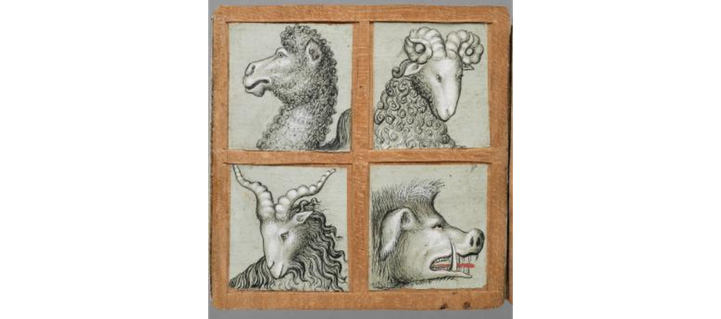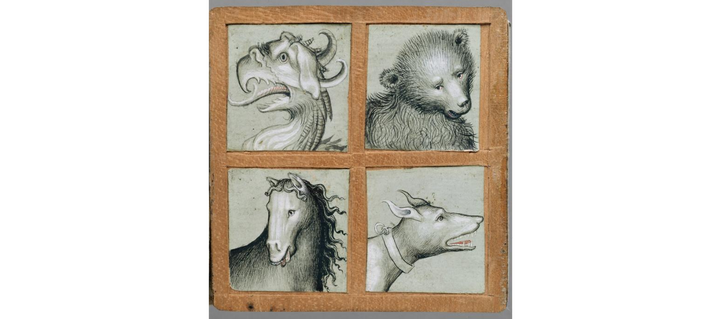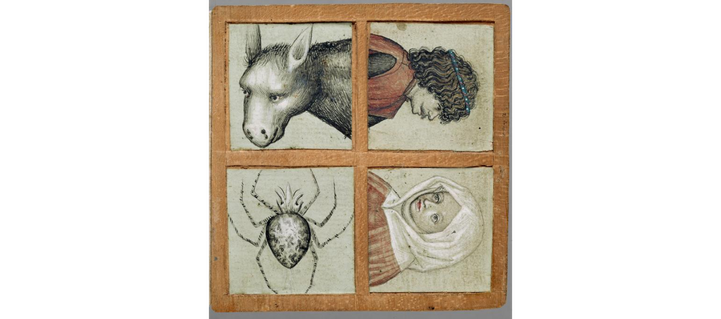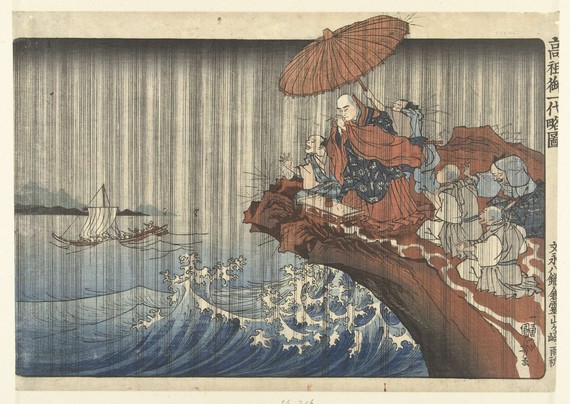Histoire de l'art en Nouvelle-Grenade (Colombie actuelle) :
"des plafonds peints à Tunja comprennent des images de la flore locale et de la faune étrangère, comme un rhinocéros et des éléphants face à des dieux gréco-romains, basés sur une série d’estampes de Fontainebleau."
19 juin 2025, #INHA, salle Vasari. #Agenda #arthist #histart #artsci
#artHist
Kyanite is used in porcelain(more dishware and plumbing than art) but it is used in jewelry. Plus it is an index mineral. But I am going to give the art vote to Dioptase for its unparalleled history as a pigment which stretches back to the Neolithic! For the #MinCup24 semi-finals and the last surviving pigment in competition!
Pretty blue Kyanite is used in porcelain(though more dishware/plumbing than art) but it is used in jewelry. Points for physics as an index mineral.
But topaz wins the art vote with centuries of gems, carving & jewelry. Plus on the physics front we have its use in lens & xray spectroscopy #MinCup24
#scicomm #minerals #artHist
#MinCup Round 3 Match 3
Don’t fall for this meat rock nonsense! Sure Rhodochrosite is pretty but vote calcite!
Vote for calcite’s gargantuan role in art history - all of marble art and limestone sculpture, chalk drawing, pigment and extender. If you care about art and art history avenge Quartz and defeat Rhodochrosite!
Vote calcite for fossils! Vote calcite for Viking navigation & birefringence!
Round 3 Match 1 of #MinCup24 is a challenge for my art or physics voting scheme!
Perovskite wins the physics vote with its exciting possible origins in the mantle or even a Brown dwarf + its potential for use in solar panels
Stibnite wins the art vote for kohl, glassmaking & pyrotechnics & as a grey-black pigment for centuries
Vote calcite for its gargantuan role in art history: all of marble & limestone sculpture, chalk drawing, large amounts of painting as pigment & extender. Vote calcite for fossils! And trilobite eyes!
Sure titanite gets points as an indicator mineral but birefringent calcite gets the physics vote!
Both minerals are made into jewelry. Omphacite appeals to me as a marine geophysicist as it’s high pressure subducted oceanic crust but Kyanite is an index mineral…. Kyanite can be a pigment.
But what really sets omphacite apart is its use in artefacts so I have to give it the art vote. #MinCup24
Quartz easily wins the art vote for #MinCup24
Humans have worked with rock crystal since at least 75000 BCE and Quartz objects are amongst our earliest talisman.
It has been used in art and sculpture and jewelry in its many forms throughout the centuries from antiquity to today. #scicomm #minerals #quartz #arthist
Both rare mineral pigments in the range of blue-green have long histories in art. #MinCup24
Dioptase was used on Neolithic sculpture & some ancients Asian murals
Vivianite known as “blue ochre” has won my art vote for Egyptian &Roman art, European painting & especially Indigenous art of Pacific NW
Howlite can be made into jewelry or carved, & it was discovered by a Canadian, Henry How in NS.
But not only has stibnite been used in kohl, glassmaking & pyrotechnics for centuries it is also a grey-black pigment found on Gothic sculpture & 16th century painting so it wins my art vote. #MinCup24
Petite correspondance de la panthère héraldique :
https://books.openedition.org/pufr/29472
#arthist #animhist
Comment utiliser des références iconographiques fiables quand on est un artiste itinérant à la Renaissance ?
Facile avec cet incroyable livre de modèles (v. 1410) !
#animhist #arthist #MaterialCulture
https://www.khm.at/en/objectdb/detail/91010/
Immerse in Kuniyoshi's exquisite portrayal of Nichiren's miracle at Reizan. Amid seductive hues, observe the fusion of faith & nature, 1833-37. Thoughts on the Buddhist narrative expressed here?
#UtagawaKuniyoshi #Rijksmuseum #ArtHist
(Characters:
https://www.rijksmuseum.nl/nl/collectie/RP-P-1956-716
1,100 works of art by Georgia O’Keeffe now digitized and available online. https://www.openculture.com/2020/06/explore-1100-works-of-art-by-georgia-okeeffe.html
#art #painting #arthist #arthistory #georgiaokeeffe #okeeffe #museums
Fascinating look at art, socialism, and politics in pre-WWII #Australia. #arthist #arthistory #photohist #photohistory https://onthisdateinphotography.com/2022/11/22/23-november-authority/
